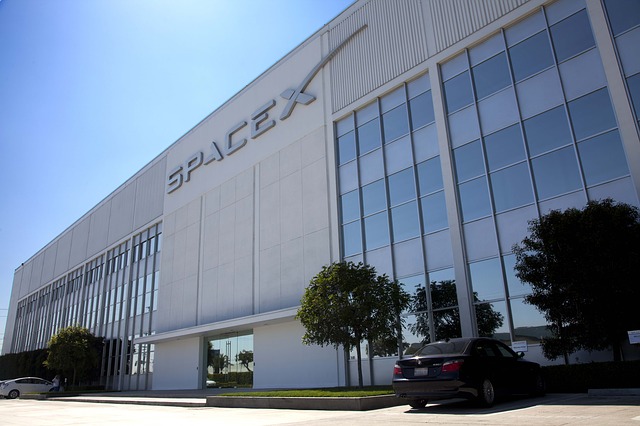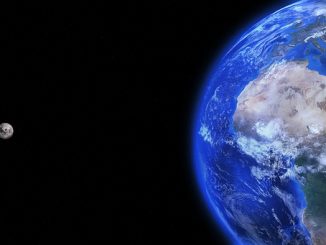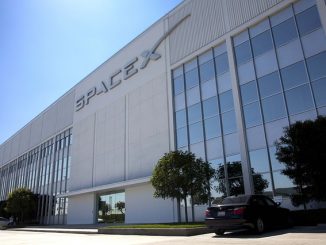
NASA’s Space Launch System (SLS) is an advanced launch vehicle that is set to launch its Orion Crew and Service Module on missions to an asteroid and then eventually launching to Mars. The launch system is involved with NASA’s space exploration program. It costs over $2 billion annually and will not be able to launch until 2019. Initially, it is only capable of launching 70 tons. If further development transpire, SLS will finally be able to launch 130 tons by 2029. However, as the weight capacity increases, the costs also rocket to $4 billion per year. Several private space advocacy groups like Space Frontier Foundation and Space Access Society have requested and suggested the cancellation of the SLS. Their argument states that SLS is unnecessarily cost-intensive and that the funds could be allotted to other NASA projects. Its cancellation could cause savings up to $30 billion. Furthermore, other spaceflight companies can get the job done at a faster pace and cheaper cost.
The space race is ongoing as private spaceflight companies attempt to beat government space organizations. According to SpaceX’s founder and CEO Elon Musk, the company is currently in the process of developing a fully reusable rocket that is set to be on a space mission to Mars.
At the International Astronautical Congress (IAC) in Adelaide, Australia, Elon Musk revealed that SpaceX will launch a reusable rocket by 2020. Its mission to Mars is estimated to launch in 2022. According to Musk, the “legendary” rocket is called Big F**king Rocket (BFR). The massive launch vehicle is 30-feet wide and carries 150 metric tons into low Earth orbit. In contrast with NASA’s SLS, SpaceX’s BFR is definitely running first place in the race with regard to capacity and cost efficiency.
BFR is not only tailor-made for travels in space, it is also designed to fly around across the Earth. On Instagram, Musk posted that BFR can “fly to most places on Earth in under 30 minutes and anywhere in under 60 minutes.” The rocket could fly through the edges of space at the speed of 18,000 mph to complete any global trip in under an hour. The SpaceX CEO also mentioned that the cost per seat in BFR should be about the same as that of a full-fare economy seat in an aircraft.
Despite the disclosure of bold and seemingly far-fetched stats, Musk is yet to execute and make the claimed specifications of BFR work. In line with this, calculations from experts are trying to debunk the billionaire’s bold claims. The University of Michigan’s Department of Aerospace Engineering professor, Ella Atkins, said, “I think that’s pretty much wishful thinking without backing it up with solid data. What’s being ignored in addition to fuel — not just the processing and loading — is who’s going to build the launchpads? What will the infrastructure look like for building, maintaining, and dealing with [these launchpads] in bad weather look like?”
Landing on Mars and successfully establishing a human settlement on the red planet is a milestone in the goal of setting up a new habitat and opening up connections in the solar system. Humankind is in search of another habitat as the Earth is reported to eventually become uninhabitable at some point, according to experts like the esteemed cosmotologist and theoretical physicist Stephen Hawking who believes that humanity only has 100 years before doomsday arrives. In other words, becoming interplanetary species by then is our only way of survival.
Reference: Next Big Future
- Bulenox: Get 45% to 91% OFF ... Use Discount Code: UNO
- Risk Our Money Not Yours | Get 50% to 90% OFF ... Use Discount Code: MMBVBKSM
Disclaimer: This page contains affiliate links. If you choose to make a purchase after clicking a link, we may receive a commission at no additional cost to you. Thank you for your support!




The “why” we must go to Mars is inadequately explored. Just to satisfy man’s innate urge to “go where no man has gone before” is trite. To find a home where mankind can live and propagate after some hypothetical natural catastrophe making Earth uninhabitable is a total waste of time and resources. Mars is a totally dead planet. We need to get over that fact. We really need to solve our manmade problems on Earth here or we will just carry them with us to another place and pollute another world with our incompetence and malfeasance.
“in addition to fuel — not just the processing and loading”
Liquid oxygen concentrated from the atmosphere, methane from either natural gas, or generated in a Sabatier reactor using water and atmospheric CO2 – a process which is which is carbon neutral.
“who’s going to build the launchpads?”
SpaceX, the first land pad being in Brownsville Texas & due to open in late 2018. Earth conditioning & moving has been going on for over a year, gant cranes ate waiting to be assembled, one of the 2 radar dishes are already there. Mods to LC-39A at KSC, and sea launch/landing platforms will be similar to their ASDS fleet but larger.
“What will the infrastructure look like for building, maintaining, and dealing with [these launchpads] in bad weather look like?”
See answer above and their Mars presentations as to what they’ll look like.. Not much different than the hurricane hardening done at all tropical and subtropical launch pads. Non issue.
Who’s gonna build the launchpads? Airlines are gonna, that’s who. Before SpaceX has a dozen successful flights of the Big Falcon Rocket under its belt, airlines are going to beat a path to SpaceX’s door with offers to build launch/landing facilities to be the first to offer 30-60 minute flights across the globe. I would guess that SpaceX would love to have them build the infrastructure and even let them keep 50% of the ticket revenue. SpaceX has no need to suffer the headaches of running an airline when there are already a dozen companies ready and eager to add the BFR to their list of passenger craft.
The thing about going to Mars is that We have to put our target and practice our craftsmanship
somewhere. Mar is Earth-like and pretty much dead anyway so it’s a good platform, plus we know more about Mars than any other planets.
If we are not going to Mars, then the closest planet-like celestial bodies we can go to are Jupiter ‘s moons which is even more far-fetched , wasteful and time consuming idea.
If we are all agreed that the global warming and greenhouse effect is just a hoax then I see why we should focus more on our problems here first.